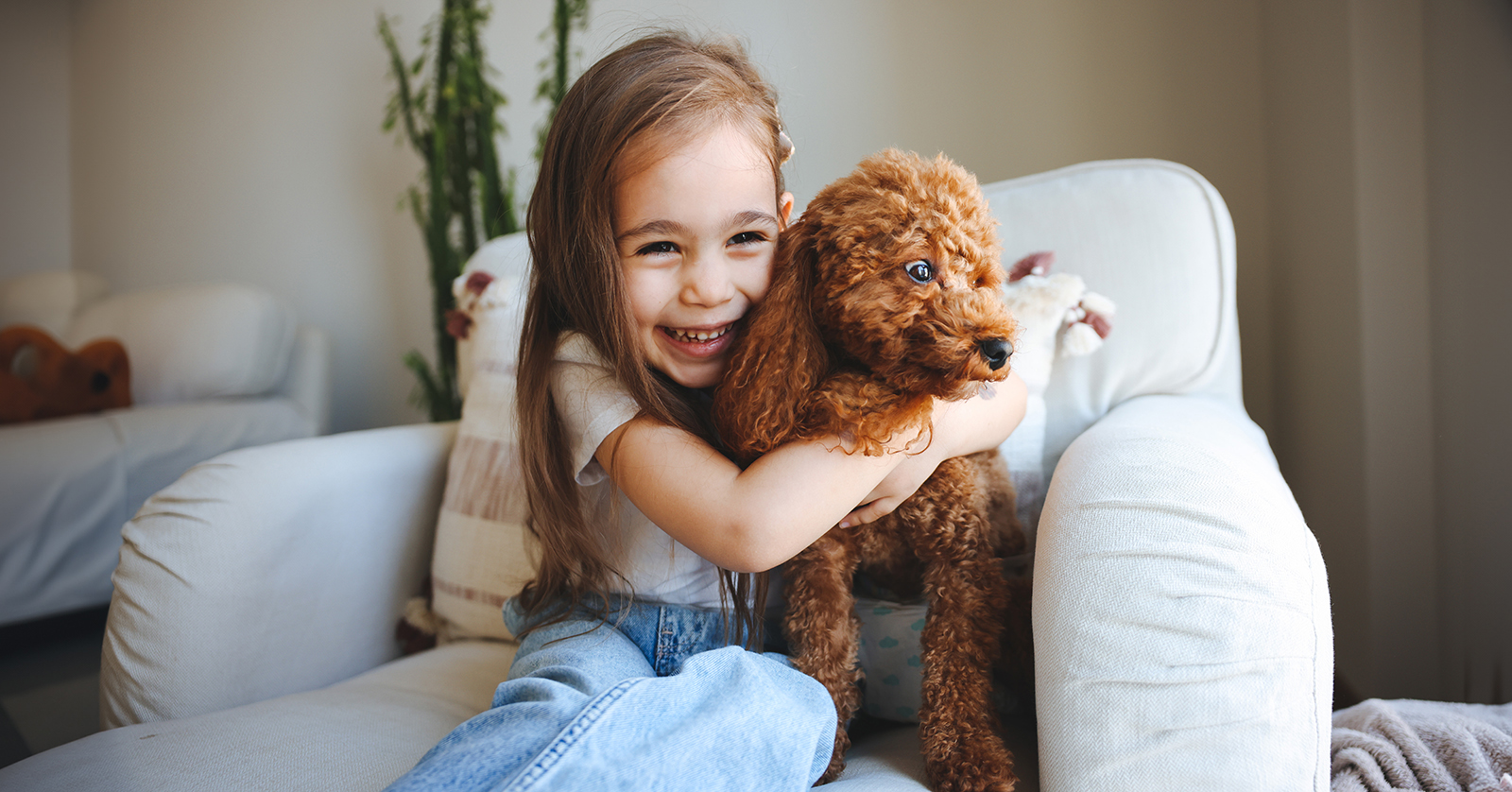NICHD-funded study informs research on health interventions involving companion animals

When playing with the family dog, children had higher levels of oxytocin compared to when they played alone with toys, according to a study funded by NIH’s Eunice Kennedy Shriver National Institute of Child Health and Human Development. Similarly, the dogs in the study also had high oxytocin levels during the play session. Produced in the brain, oxytocin is a hormone associated with social behavior and bonding. When the children interacted with a dog they had not met before, they had higher oxytocin levels than when playing with toys, but not as high as when they were paired with their own dog. The findings may inform therapeutic approaches involving animals to promote physical, mental, and emotional health in children.
The study was conducted by Gitanjali Gnanadesikan, Ph.D., Katherine M. King, and Evan MacLean, Ph.D., of the University of Arizona, and their colleagues. It appears in Psychoneuroendocrinology. Additional funding was provided by Mars Petcare.
Background
Previous research indicates that interactions between dogs and their owners may influence oxytocin levels in each species. However, these studies focused on adult dog owners and had evaluated owners and dogs separately. Researchers also have examined oxytocin levels in bonded dog-owner pairs but had not evaluated interactions between people and unfamiliar dogs.
Results
For the current study, researchers simultaneously tracked oxytocin levels in children and dogs when children interacted with their family dogs and an unfamiliar dog.
The study enrolled 55 children and their dogs. Children were left in a room and asked to play with their dogs or to “keep the dog company.” In another session, the children interacted instead with an 8½ year old dog chosen for a calm demeanor and no history of aggression. In the control session with no dog present, the children sat at a table and were given a box of toys to choose from, along with various puzzles, colored pencils, and drawing paper. Salivary samples were collected from children and dogs before the session, 15 minutes into the session, and 50 minutes after the first sample had been collected.
Children produced the highest levels of salivary oxytocin when interacting with their family dog. They also produced more salivary oxytocin when interacting with the unfamiliar dog, although not as much as when they were with their family dogs. The children produced the least oxytocin during the play session without dogs.
Family dogs’ salivary oxytocin levels rose during interactions with their child companions. However, salivary oxytocin levels dropped in the unfamiliar dog during interactions with the children.
Significance
The authors wrote that their findings provide important new data on the effects on oxytocin levels of interactions between children and dogs. The findings also raise the possibility that therapeutic interventions involving animals may influence oxytocin levels in children and could inform future studies on how interventions involving animals may benefit children.
Reference
Gnanadesikan, GE, et al. Effects of human-animal interaction on salivary and urinary oxytocin in children and dogs. Psychoneuroendocrinology. 2024.

 BACK TO TOP
BACK TO TOP